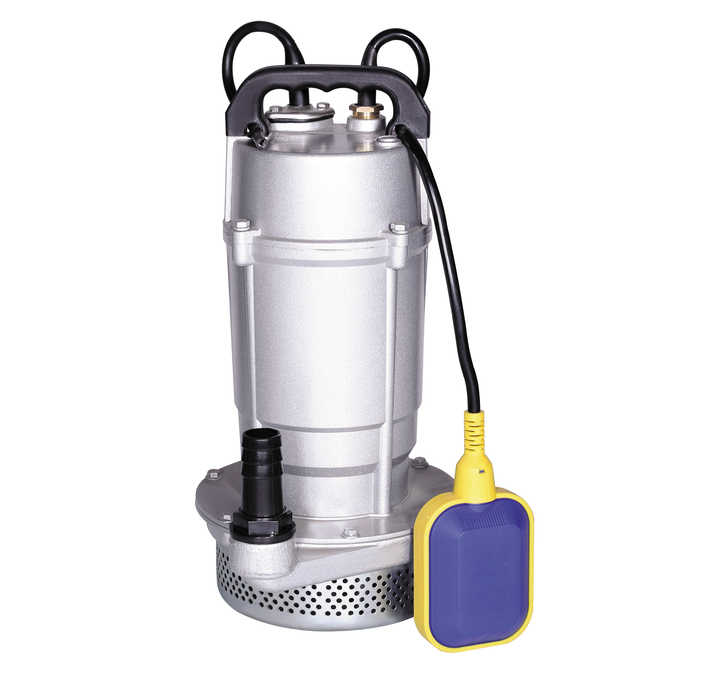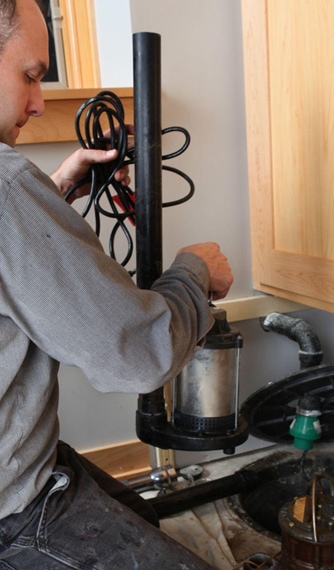Speedy Solutions for Taking Care of a Sump Pump
Speedy Solutions for Taking Care of a Sump Pump
Blog Article
We've encountered this post on Cleaning & Maintenance Tips for Your Home's Sump Pump listed below on the net and concluded it made good sense to quickly share it with you on this page.

Sump pumps are vital elements in many homes, particularly in locations vulnerable to flooding or extreme moisture. They assist protect against water damages by efficiently removing excess water from cellars or crawl spaces. Nonetheless, like any other appliance, sump pumps need routine maintenance to ensure they work successfully when required the most. Cleaning your sump pump is an important part of its upkeep, and recognizing exactly how to do it correctly can save you from expensive repair services and potential disasters.
Intro
Preserving a tidy sump pump is important for its appropriate performance and durability. Disregarding this necessary task can lead to obstructions, breakdowns, and inevitably, water damages to your property. Therefore, finding out just how to clean up a sump pump is important for property owners that count on these gadgets to maintain their cellars dry and safeguarded.
Indications of a Dirty Sump Pump
Knowing when your sump pump requires cleaning is vital for avoiding potential malfunctions. Some usual indications that show a dirty sump pump consist of weird noises throughout procedure, decreased water circulation, and noticeable debris in the pit. If you discover any one of these signs and symptoms, it's important to cleanse your sump pump promptly to prevent any type of more concerns.
Preparing for Cleaning
Before you begin cleaning your sump pump, it's necessary to take some safety and security precautions. Start by turning off the power to the pump to avoid any type of electrical mishaps. In addition, wear suitable safety gear, such as gloves and safety glasses, to safeguard on your own from dirt, debris, and possible pathogens.
Comprehending the Sump Pump
Prior to diving into the cleaning process, it's vital to have a basic understanding of exactly how a sump pump works. Typically set up in a pit or container below the basement floor, a sump pump consists of several key parts, consisting of a pump, a float switch, and a discharge pipe. When water accumulates in the pit, the float button turns on the pump, which after that pumps the water out with the discharge pipeline, far from the building's foundation.
Step-by-step Guide to Cleaning a Sump Pump
Shutting Off the Power
Begin by separating the power supply to the sump pump to avoid any crashes while cleaning.
Looking For Proper Performance
Before re-installing the pump, perform a fast examination to guarantee that the float button activates the pump properly. Put some water into the sump pit and observe the pump's operation. If every little thing is functioning appropriately, you can reassemble the pump and reconnect the power supply.
Getting Rid Of Debris and Dirt
Use a bucket or an inside story to eliminate any type of noticeable particles, dirt, or debris from the sump pit. Dispose of the debris appropriately to prevent it from obstructing the pump or the discharge pipeline.
Cleaning the Pump and Float Switch
Once the pit is clear of debris, very carefully get rid of the pump from the pit. Examine the pump and the float switch for any kind of indications of damage or wear. Use a soft brush or towel to cleanse the surface areas and eliminate any kind of accumulated gunk.
Flushing the System
After cleaning up the pump and float button, purge the sump pit with tidy water to remove any kind of continuing to be dirt or debris. This will help make certain that the pump runs smoothly and efficiently.
Maintenance Tips to Keep Your Sump Pump Clean
In addition to regular cleansing, there are numerous upkeep tips you can follow to keep your sump pump in optimal problem:
Verdict
Cleaning your sump pump is an essential element of its maintenance and makes sure that it operates successfully when you require it the most. By adhering to the actions described in this guide and incorporating normal maintenance right into your regimen, you can expand the lifespan of your sump pump and protect your home from water damage.
6 STEPS ON HOW TO CLEAN A SUMP PUMP PROPERLY
UNDERSTANDING SUMP PUMPS
Your sump pump plays a crucial role in protecting your home by managing and removing excess water. It primarily functions as a “shield”, guarding your basement against the damaging effects of water accumulation. The pump is housed in a sump pit in the lowest part of your basement, and its job is to pump out any water that collects there.
During heavy rainfalls or when snow melts rapidly, water can infiltrate your basement, posing potential risks like flooding, structural damage, and harmful mold growth. Here, the sump pump springs into action, pumping out the intruding water and directing it away from your home.
SAFETY FIRST
Before cleaning, remember to prioritize safety. Disconnect the sump pump from the power source to prevent any accidental electric shocks. Also, wear sturdy gloves to protect your hands from any sharp or dirty components within the pump.
REMOVE THE SUMP PUMP
After ensuring your safety, the next step is to remove the sump pump from its pit. Doing this might require careful maneuvering as you don’t want to damage any pump components. Once removed, clean the sump pit to remove any accumulated debris or sludge.
INSPECT THE PUMP
Inspect the pump for any visible signs of wear or damage. Check the power cord, float switch, and impeller housing. If any components look worn out or damaged, consider replacing them to ensure optimal performance.
CLEAN THE PUMP
Thoroughly clean the pump with warm, soapy water. Make sure to rid it of any dirt, gravel, or other debris that might impede its performance. You can use a toothbrush to clean the small, hard-to-reach parts of the pump.
REINSTALL THE SUMP PUMP
Reinstall the pump into the sump pit Make sure it’s positioned correctly to remove the water effectively Once it’s back in place, reconnect it to the power source TEST THE PUMP
Finally, pour some water into the pit to ensure the pump works correctly. It should start automatically and begin pumping out the water; if it doesn’t, check the power source and the positioning of the pump.
Remember, while cleaning your sump pump is an essential part of home maintenance, hiring a professional plumber for a thorough inspection and cleaning at least once a year is also important. This will ensure that your pump is in optimal condition, ready to protect your home from potential water damage.
BEST PRACTICES FOR CLEANING SUMP PUMP DISCHARGE PIPES
Regular Inspection: Regularly inspect your discharge pipes, especially during heavy rainfall or snowmelt periods. Look for any signs of blockage or damage. Early detection of problems can prevent serious issues down the line. Periodic Cleaning: Over time, sediment and debris can accumulate in the discharge pipes, impeding the flow of water. Regular cleaning helps keep the pipes clear and functioning efficiently. You can use a high-pressure water jet to effectively clean the pipes. Insulation During Winter: In colder climates, discharge pipes can freeze, blocking the outflow of water. Protect your discharge pipes from freezing temperatures by insulating them with foam pipe insulation. This will ensure the sump pump can continue to discharge water even in freezing conditions. Proper Positioning: The discharge pipe should be positioned to direct water away from your home’s foundation. Improper positioning can lead to water seeping back into the basement. Ensure the pipe is long enough and angled correctly. Installation of a Check Valve: A check valve prevents water from flowing back into your sump pit after the pump has pushed it out. Installing a check valve helps maintain the efficiency of your sump pump and reduces the risk of flooding. Minimize Pipe Turns: Every curve or turn in the discharge pipe can decrease the efficiency of water flow. By minimizing turns and bends in your discharge pipe, you can increase the efficiency of your sump pump. https://www.fullspeedplumbing.com/how-to-clean-a-sump-pump-properly9999/

I ran across that review about Steps to Cleaning Your Sump Pump Properly when doing a lookup on the search engines. Enjoyed our write-up? Please share it. Help another person check it out. I praise you for being here. Don't hesitate to check our site back soon.
Book Appointment Report this page